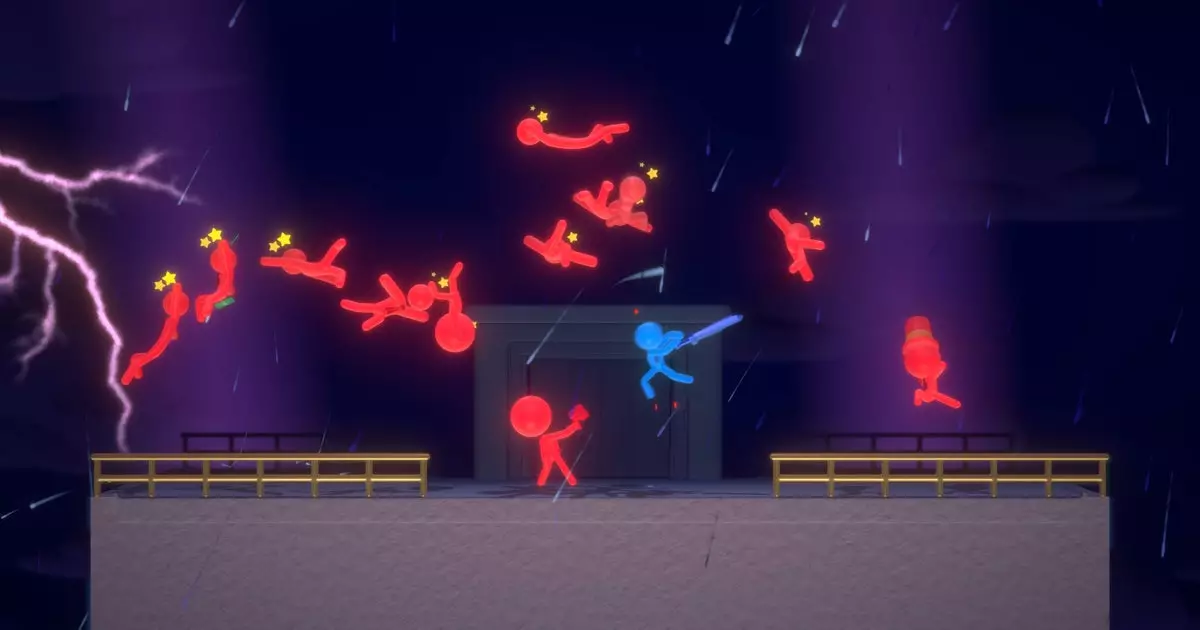In a gaming landscape increasingly saturated with mediocrity, few titles dare to challenge societal norms with the audacity and humor that “Stick It to the Stickman” promises. This upcoming title by Free Lives eschews the typical narrative of heroism or escape, instead immersing players in a risqué, satirical universe where corporate greed and absurd hierarchy take center stage. The game’s premise is simple yet inherently provocative: in a world where stick figures are burdened with meaningless jobs and shareholders demand relentless growth, the solution lies in chaos—climbing the tower and unleashing physical mayhem upon executives, culminating in a final showdown for power.
The developers’ choice to lean into satirical violence is a deliberate act of rebellion. By flipping the corporate ladder on its head—literally kicking characters out of windows and engaging in slapstick brawls—”Stick It to the Stickman” reframes the frustrations of modern work life through a grotesque comedic lens. It’s not merely about violence but about exposing the absurdity of corporate culture, where human labor is commodified, and egos are inflated to laughable degrees. This approach effectively transforms the game into a mirror held up to capitalism’s face, daring players to confront and vent those frustrations in a hyperbolic, cathartic environment.
Gameplay That Combines Humor with Critical Insight
From a gameplay perspective, Free Lives has crafted a zany yet refined experience that marries physical comedy with strategic progression. The demo reveals a game that’s equal parts brawling arena and satirical critique. Starting from humble beginnings—sitting on a park bench representing the lowly worker—the journey escalates through escalating levels of absurdity, from literally beating up colleagues to battling high-level executives on the top floors of the skyscraper. The game’s mechanics seem to marry fluid, floaty ragdoll physics reminiscent of “Gang Beasts” with weighty combat mechanics that deliver satisfying hits.
What stands out is the game’s inventive use of physics, allowing players to wield ridiculous objects—like coffee mugs—and execute over-the-top moves that highlight the game’s slapstick core. These exaggerated physical interactions serve as both humor and a form of visceral catharsis, emphasizing the fluidity between chaos and control. The developers smartly integrate humor into each gameplay element, with levels that offer distinctly different challenges, keeping the experience fresh as you ascend through the corporate hierarchy.
Furthermore, “Stick It to the Stickman” doesn’t shy away from satire’s biting critique. The cartoonish violence underscores the toxic environment of modern capitalism, mocking corporate ladders and hierarchies that often seem more designed for spectacle than productivity. The game’s humor isn’t just crude fun; it’s a sharp commentary on how corporate obsession with growth can lead to absurdity—and, in this case, chaos.
The Future of Corporate Rebellion in Gaming
Free Lives’ announced roadmap suggests that “Stick It to the Stickman” isn’t just a fleeting joke but an evolving commentary. Their plan to expand the game’s universe to include sectors like manufacturing, science, lobbying, and even a doomsday bunker—each with unique mechanics—signals their intent to craft a parody of entire corporate ecosystems. This layered approach offers players multiple avenues of satire, allowing for a broader critique of societal institutions.
The early access model is particularly strategic. Providing players with monthly updates ensures the game remains fresh and adds depth to its satirical universe over time. It also invites the community to engage directly with the game’s development, fostering a shared sense of rebellion against corporate conformity. As the game evolves, it will inevitably shape a more nuanced conversation about capitalism’s influence—not as a detached critique but as an active, immersive experience.
In my view, the appeal of “Stick It to the Stickman” lies in its unapologetic attitude. It delivers a loud, humorous punch to the face of corporate absurdity, all while offering engaging gameplay. Its exaggerated physics and satirical tone serve as both entertainment and protest, reminding us that sometimes, the most effective form of resistance is a well-placed punchline—and, in this case, a well-aimed kick out the window. If executed well, this game could become a cultural touchstone—bridging the gap between satire, chaos, and engaging mechanics in a way that challenges players—and perhaps society—to rethink their relationship with authority.

